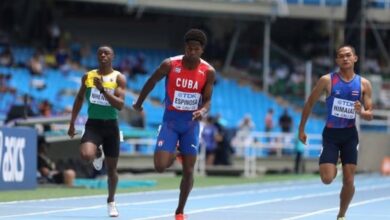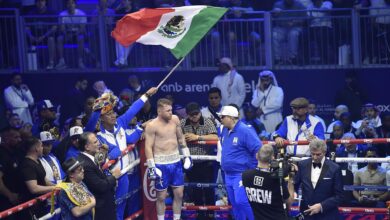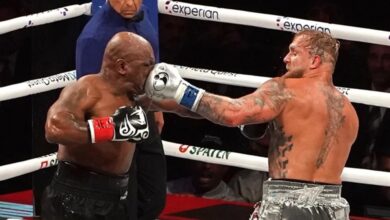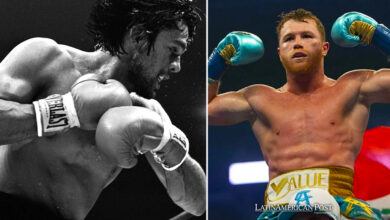Cuban Russian Filmmakers Honor Boxing Icon Teófilo Stevenson
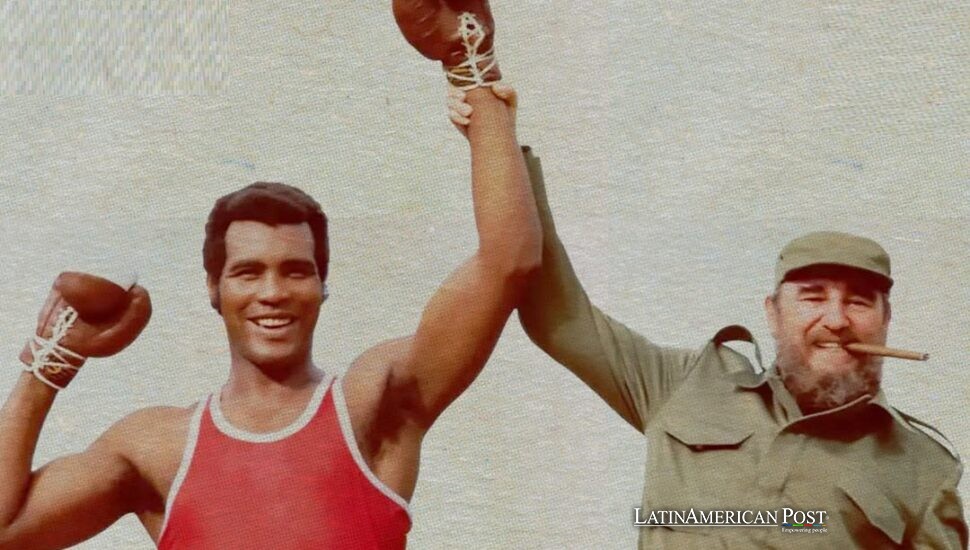
A planned film partnership between Cuban and Russian studios will bring the tale of boxing titan Teófilo Stevenson into theaters. The motion picture “Teófilo” shows the achievements of a man who became a three-time Olympic gold medalist.
A Historic Partnership in Film
In an unprecedented fusion of talent, Cuba and Russia have joined forces to produce a film inspired by one of the most distinguished boxers of the twentieth century: Teófilo Stevenson. The new biographical film Teófilo has caught the interest of American and Russian audiences because of its focus on Cuban boxing history and Russia’s appreciation of athletic narratives. In bringing these nations into a joint production, the film shows how athletics creates bridges between different cultures to tell the tale of a celebrated fighter.
This story differs from typical biographical accounts. The production team selected defining matches in Stevenson’s time as a boxer, along with encounters that shaped his path to success. As director Alejandro Gil explains, the film combines documented facts with imagined scenes to paint a complete picture of events. Instead of presenting a simple timeline of deeds, this account reveals the core nature of a warrior who left his mark on each person he met. The narrative goes deeper than achievements to showcase the relationships and connections that shaped his influence on others.
Teófilo Stevenson, born in Las Tunas in 1952 and died in 2012, remains the only amateur boxer to secure three Olympic gold medals in the same division. His raw power and dignity in the ring defined an era in Cuban sports. Combining unrelenting force with remarkable sportsmanship, Stevenson emerged as a heavyweight capable of flooring an opponent with a single right-hand punch. That same integrity outside the ropes made him a beloved figure at home, personifying the Cuban ethos that puts national pride over individual glory.
Cuban cinema has shown a deep appreciation for the island’s sporting heroes for decades, but Teófilo marks a milestone in international cooperation. While Russia has historically pursued its tradition of sports biopics—often emphasizing Olympic feats or achievements in hockey, figure skating, and gymnastics—this new production signals a broader agenda to highlight legends from different cultural backgrounds. Filming will occur in key Cuban locations, including Stevenson’s birthplace of Las Tunas and bustling Havana, and in Russia, where scenes covering his third Olympic triumph at Moscow 1980 will be shot. This cinematic scope echoes the global respect Stevenson earned, underscoring that his star transcended both geopolitics and the limitations of amateur boxing.
Depicting a Boxing Colossus
Making a sports icon film needs additional elements, not just fight recreations. In Teófilo, director Alejandro Gil goes through the depths of his subject’s character. But the focus moves past the three Olympic gold medals into personal territory. The film shows the renowned boxer’s quiet nature and dedication to his beliefs. Through different parts of the story, Gil combines scenes from Teófilo Stevenson’s home life and daily practices. The narrative includes times when he felt unsure, followed by his return to form. The director wanted to show how this great athlete dealt with his inner battles. On-screen, viewers see both the celebrated champion and the regular person beneath the public image, which gives them a complete look at his experiences. Through these combined story pieces, the film presents a man who became known as much for his good character as for his boxing success.
Because Stevenson’s story resonates profoundly in Cuba, the filmmakers must balance authenticity with cinematic flair. They do not want to produce a standard docudrama that only boxing fans would appreciate, nor do they intend to dilute the fighter’s persona into generic hero worship. Instead, the emphasis will be on capturing the intangible aspects of Stevenson’s character: the quiet confidence, the intense discipline, and that intangible “it” factor that drew crowds wherever he fought. Consequently, Gil hopes to show how a man of great physical prowess could maintain a surprisingly gentle nature outside the ring.
The creative team also strongly believes in the film’s look and feel. From the description given to Cuban state media, the production design will blend the vibrant textures of Havana’s streets with the quieter, rural atmosphere of Las Tunas, where Stevenson’s earliest boxing aspirations took shape. In Russia, another filming sequence shows Stevenson as he wins his third Olympic championship in Moscow in 1980. The matches turned him into a sports icon, and his performance made people set aside their differences during the Cold War between nations. Through his basic techniques and fluid movements in the ring, he stood out as someone boxing fans had never seen before. Given the visual contrasts between tropical Cuba and wintry Russia, the film’s design is primed to highlight cultural diversity.
A feature of roughly two hours, Teófilo aims to tell a compelling cinematic narrative that appeals to an international audience. Some dramatic liberties will be taken, with newly imagined characters or composite figures representing trainers, fellow boxers, and others in Stevenson’s sphere. Although the core storyline is anchored in actual events, the creators believe such fictional enhancements will help portray the significance of the champion’s journey, delivering emotional arcs that transcend sports alone. Combining these features, the film avoids an essential list of successes. It transforms into a thoughtful examination of what drives people forward, what they give up along the way, and how someone builds their sense of self despite constant public attention.
The Faces Bringing Stevenson’s Saga to Life
The film’s outcomes depend on Alejandro Philips, a new Cuban actor who accepted the task of playing Teófilo Stevenson. As a fourth-year student at the Instituto Superior de Arte (ISA) in Havana, Philips steps into cinema through Teófilo as his first role. The debut sparked interest across the nation. People question if this newcomer possesses what it takes to portray a man who reached 6’3″ and used his size to rule the boxing ring with his fierce right punch.
But Philips speaks of his role with honor and thrill. Through public remarks, he recognizes his duty to represent an athlete who became part of Cuba’s identity. In preparation, he trains at the Rafael Trejo Gym, which carries boxing history in Havana. At this location, he joins expert coaches who help him match each movement and position to Stevenson’s signature techniques. This effort extends to forging the posture and aura of a prizefighter, even outside ring sequences—an approach essential to capturing the authenticity that Cuban audiences demand.
Alongside Philips, Cuban actor and comedian Kike Quiñones has been tapped to portray Alcides Sagarra, Stevenson’s renowned trainer. Under Sagarra’s guidance – a man known across Cuba as boxing’s originator – athletes transformed into medal winners through step-by-step training plans. Through this production, Quiñones moves away from his previous comedy performances, which reveals his interest in portraying the teacher-student bond at the center of this narrative. The interplay between these two characters—a dedicated mentor and an ambitious apprentice—will presumably form the emotional spine of Teófilo.
This synergy reflects the real-life partnership that guided Stevenson’s career from its early stages until his final fight. Under Sagarra’s guidance, Cuban amateur boxers combined strict routines with ethical principles. The training included back-breaking exercises from sunup to sundown, yet his methods exceeded physical preparation. He spoke with athletes about honor and responsibility in quiet moments between matches. Each fighter stepped into the ring with more than victory as a goal – they carried their nation’s hopes and personal standards. The blend of physical training and personal development created their success records. In practice sessions, the instructor showed his boxers how this sport taught them lessons about life alongside athletic skills. During each training day, he connected technical moves with values that extended past the ring. Because of these methods, Cuban fighters became leading medal winners at national contests. On top of that, these intimate glimpses will explore what it cost Stevenson to maintain unwavering focus for two decades: 301 victories out of 321 bouts.
The film’s production team expects the synergy among cast members to ensure that the intangible heart of Stevenson’s story resonates with contemporary viewers. The aging community maintains memories of his achievements in the ring, yet newer generations know little about what the boxer accomplished. Through its choice to include rising stars such as Philips, this movie lets viewers learn about an athlete who embodied what Cuban athletics represents: a commitment to represent his nation with skill and dignity instead of chasing money or spots in paid competitions. But his actions speak to principles deeper than the matches – they tell of someone who fought to bring respect to his fellow citizens.
Celebrating a Legend’s Enduring Legacy
Teófilo Stevenson put his allegiance to Cuba inside and outside the ring above everything. Professional agents placed stacks of money before him to face elite boxers, but he chose to remain an amateur athlete. His decision became a testament to the sport’s legacy, marking his refusal of financial gains for his principles. The satisfaction of stepping onto podiums for Cuba, sharing victories with his fellow citizens, and carrying his nation’s flag in amateur matches held greater worth to him than foreign riches.
After his final match in 1988, he took up duties at the Cuban Boxing Federation and added his voice to the National Commission for Retired and Active Athletes. He shaped new boxers in these roles and kept boxing at high standards. The skilled athlete became a teacher who passed the knowledge to Cuba’s rising competitors. Athletes still remember his readiness to teach moves or give encouragement to beginners who looked up to him. His consistent generosity in and out of official sports organizations contributed to the sense that Teófilo Stevenson was far more than a fierce competitor—he was a kind, approachable figure championing the solidarity that defines Cuban boxing culture.
During Stevenson’s 2012 funeral, citizens gathered along roads to say farewell to a boxer who embodied Cuban sports determination. People shared stories about his right hand—the one that made seasoned boxers pause—as it came to reflect Cuba’s ability to compete against larger nations. Old videos of Stevenson in the ring show his exact movements and resolve through three Olympic competitions. Years had passed since his final match, and admirers still talked of both his boxing talent and steadfast principles.
The film “Teófilo” presents the dual nature of a champion who brings fear yet remains modest. But instead of telling his life story from start to end, the film focuses on specific events that built his character. From his youth’s unassuming training sessions to his culminating triumph at Moscow in 1980, each chapter will illustrate how he balanced a gentle personality with the unstoppable drive that kept him at the top of amateur heavyweight boxing for nearly twenty years. His achievements include Olympic and title wins, plus the sincere appreciation from his people, which matters as much.
The ties linking Cuba to Russia demonstrate Stevenson’s reach across borders. After hosting the Olympic Games 1980, Russia sought to maintain its athletic partnership with Cuba through Teófilo’s enduring presence. In the closing segments filmed in Russia, viewers see his third Olympic triumph – a scene that gripped Russian spectators and revealed sports’ intertwining with political tensions during Cold War times. The filmmakers centered on what lies at success’s core: an individual who kept his principles intact despite roadblocks and global demands to leave his imprint on sports history.
After its release, Teófilo could rank among the most memorable sports films that cross borders. The two-hour story presents a determined boxer and a tribute to Cuban perseverance through the choices of a man who chose principles instead of money. Through camera work and authentic settings next to performances by new talent, the film seeks to bring back Teófilo Stevenson’s legacy in a way that connects with all cultures ‒ showing people that success comes without losing one’s character.
Stevenson’s story tells a different tale in today’s boxing scene of million-dollar deals and fame. It demonstrates how athletic success stems from a love of country and personal values rather than the pursuit of riches, particularly in Cuba’s structured amateur sports system. Although many fans can’t help wondering how Stevenson would have fared in a professional circuit teeming with legendary names, his legacy rests firmly on what he accomplished under the amateur banner: unprecedented triple Olympic gold, multiple world titles, and an unimpeachable record of sportsmanship.
Also Read: Argentina’s Messi May Seek Another 2026 World Cup Dream
A contemporary audience recognizes this story as a testament to sports’ ability to unite people. The international success of Teófilo presents a tale of heritage and mutual achievement, along with admiration for an athlete who stayed authentic despite obstacles. In Havana’s streets, Las Tunas’ training centers, and Moscow’s competition rings, Teófilo Stevenson became more than a fighter with medals: he symbolized determination and belief. But his example lives on through generations of athletes who learned that victory stems from staying true to one’s principles. The message of his remarkable path continues to inspire people across borders and cultures. His decisions prove how athletic excellence creates bridges between communities instead of walls. Through his accomplishments, Stevenson showed that dedication to personal values matters more than financial gain.

